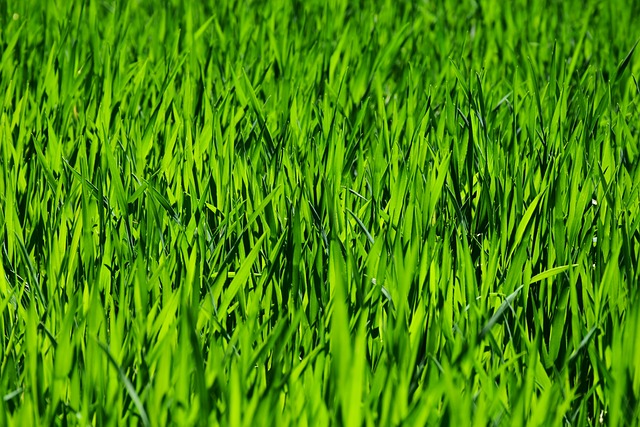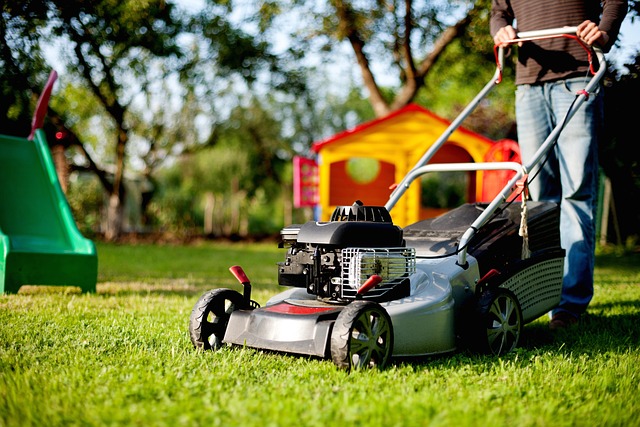Irrigating lawns is key to effective Lawn Care and Landscaping, with water needs varying by grass type, soil composition, and climate. Assessing microclimates and terrain is vital for installing irrigation systems that distribute water evenly, promoting lush landscapes while conserving resources. Choosing the right system (drip, sprinkler, or micro-sprinkler) based on property size, soil type, and climate ensures tailored water application, preventing over or underwatering. Strategic installation, regular maintenance, and compliance with local regulations keep your lawn and landscape thriving year-round.
“Elevate your lawn care game with a tailored irrigation system! Effective lawn landscaping requires understanding your turf’s unique water requirements. This guide delves into the essentials, offering insights on ‘Understanding Your Lawn’s Water Needs’ as the cornerstone for successful irrigation system installation. We’ll explore key factors in choosing the ideal system, ensuring optimal performance and efficiency. From initial planning to maintenance tips, master the art of sustainable lawn care.”
- Understanding Your Lawn's Water Needs: A Foundation for Effective Irrigation System Installation
- Choosing the Right Irrigation System: Factors to Consider for Optimal Performance and Efficiency
- Step-by-Step Guide to Installing an Irrigation System: From Planning to Maintenance
Understanding Your Lawn's Water Needs: A Foundation for Effective Irrigation System Installation

Irrigating your lawn is a vital aspect of lawn care and landscaping, and understanding your turf’s water requirements is the cornerstone of effective system installation. Every lawn is unique, with varying water needs based on factors like grass type, soil composition, and climate conditions. For instance, warm-season grasses like Bermuda or Zoysia typically require less frequent but deeper watering, while cool-season varieties such as Kentucky Bluegrass demand more frequent, shallow irrigations to maintain optimal health.
Before installing an irrigation system, assess your lawn’s microclimates—shaded vs. sunny areas—and consider the lay of the land. Sloped or uneven terrain may necessitate specific sprinkler types and placement to ensure even water distribution. By customizing the watering routine to match your lawn’s distinct needs, you’ll create a lush, vibrant landscape while also promoting water conservation.
Choosing the Right Irrigation System: Factors to Consider for Optimal Performance and Efficiency

When it comes to irrigation system installation, selecting the appropriate system is key to achieving optimal performance and efficiency in both lawn care and landscaping. Several factors influence this decision, each playing a crucial role in ensuring your garden or landscape receives the right amount of water at the right time.
Firstly, consider the size and layout of your property. Different irrigation systems cater to various landscapes, from small residential yards to expansive commercial spaces. Additionally, soil type and climate conditions are essential considerations. Water requirements vary depending on whether you have sandy loam or clay-rich soil, for instance. Similarly, regions with frequent rainfall may need more sophisticated watering mechanisms to avoid waste. Choosing a system that aligns with these factors ensures water distribution is even, preventing overwatering or underwatering areas of your lawn and landscaping.
Step-by-Step Guide to Installing an Irrigation System: From Planning to Maintenance

Installing an irrigation system is a great way to ensure your lawn and landscaping thrive, especially in regions with varying weather patterns. Here’s a step-by-step guide to help you navigate this process from start to finish.
Begin by assessing your property’s unique needs. Consider factors like soil type, terrain, plant species, and the size of your lawn or garden. This evaluation will dictate the type of irrigation system best suited for your space—drip, sprinkler, or micro-sprinkler. Next, create a detailed plan, marking areas requiring coverage and identifying potential obstacles like trees or structures. Obtain any necessary permits and ensure your chosen system aligns with local regulations regarding water usage and landscaping. Once approved, prepare the grounds by removing vegetation and installing any required valves or filters to maintain water quality. Laying the irrigation lines according to your plan is crucial; use precision tools to ensure an efficient, effective layout. Finally, test the system thoroughly, checking for leaks and ensuring each spray head or drip emitter functions correctly. Regular maintenance, including cleaning filters and inspecting lines, will keep your irrigation system running optimally throughout the year, contributing to vibrant lawn care and landscaping.
Irrigation system installation is a strategic process that, when executed correctly, can transform your lawn care and landscaping routine. By understanding your lawn’s water needs, selecting the appropriate irrigation system, and following a meticulous step-by-step guide, you’ll not only enhance your yard’s health but also ensure efficient water usage. Embrace this innovative approach to lawn care and reap the benefits of a lush, vibrant landscape all year round.




